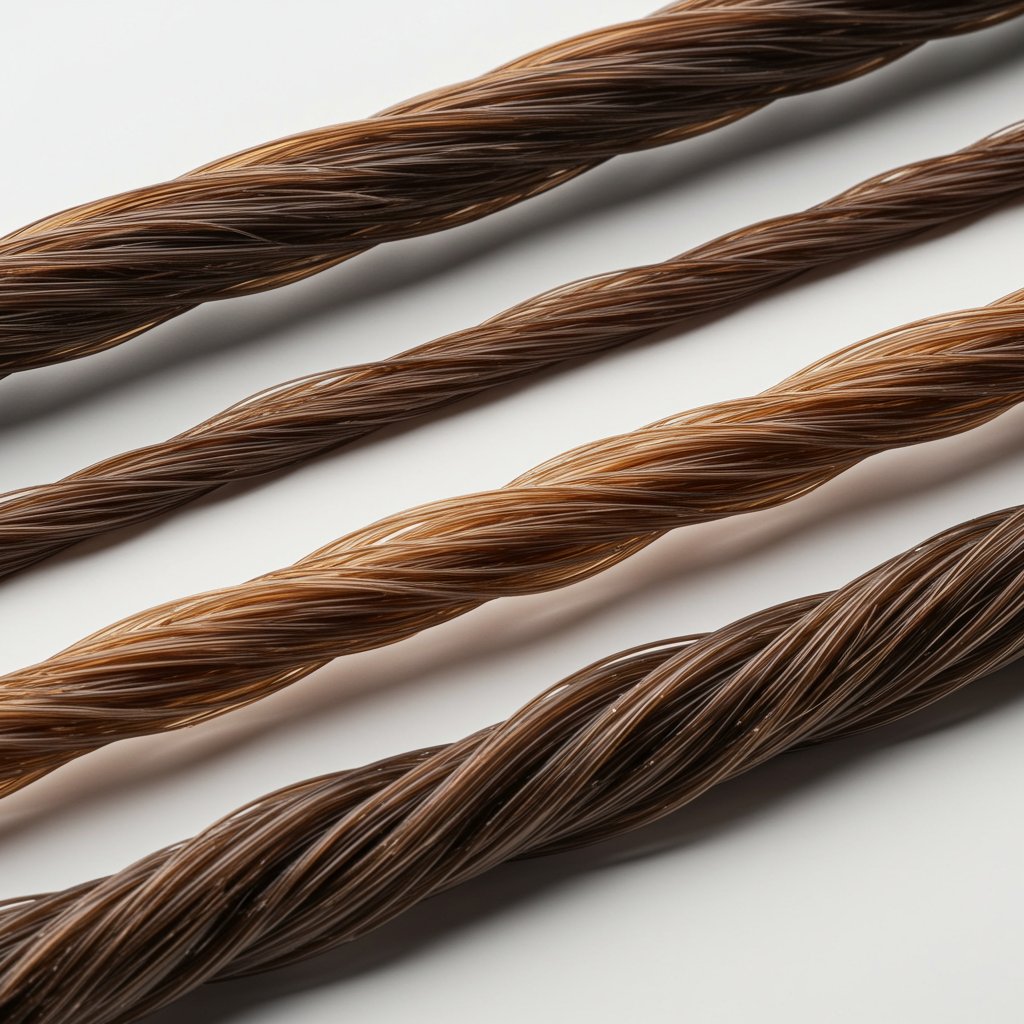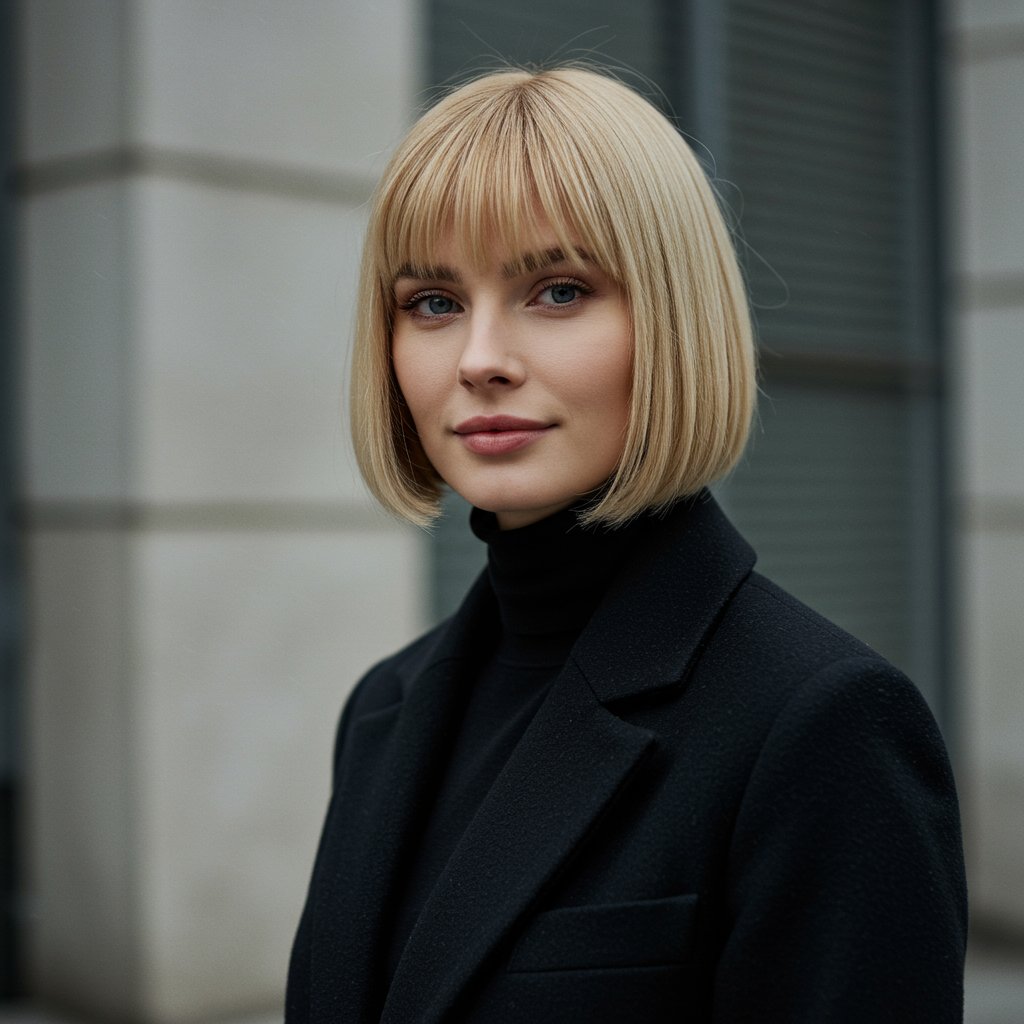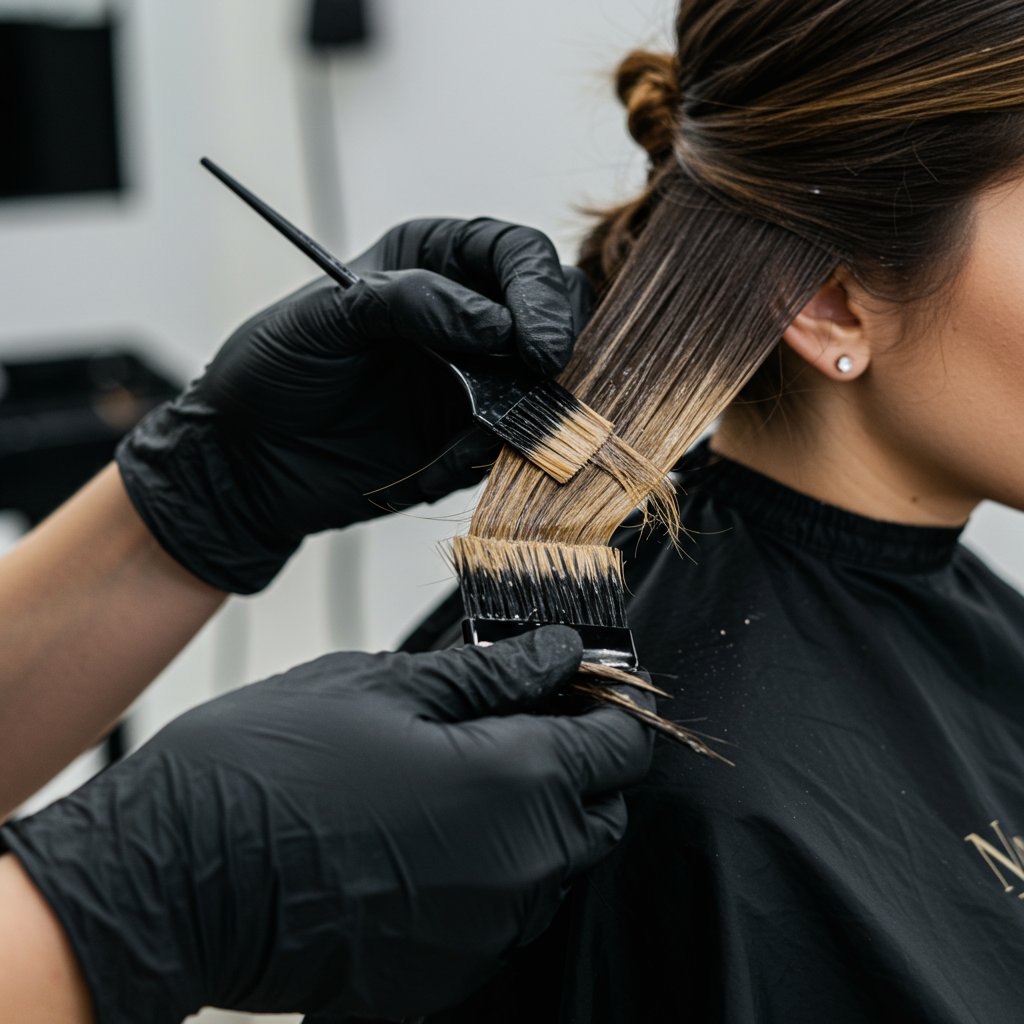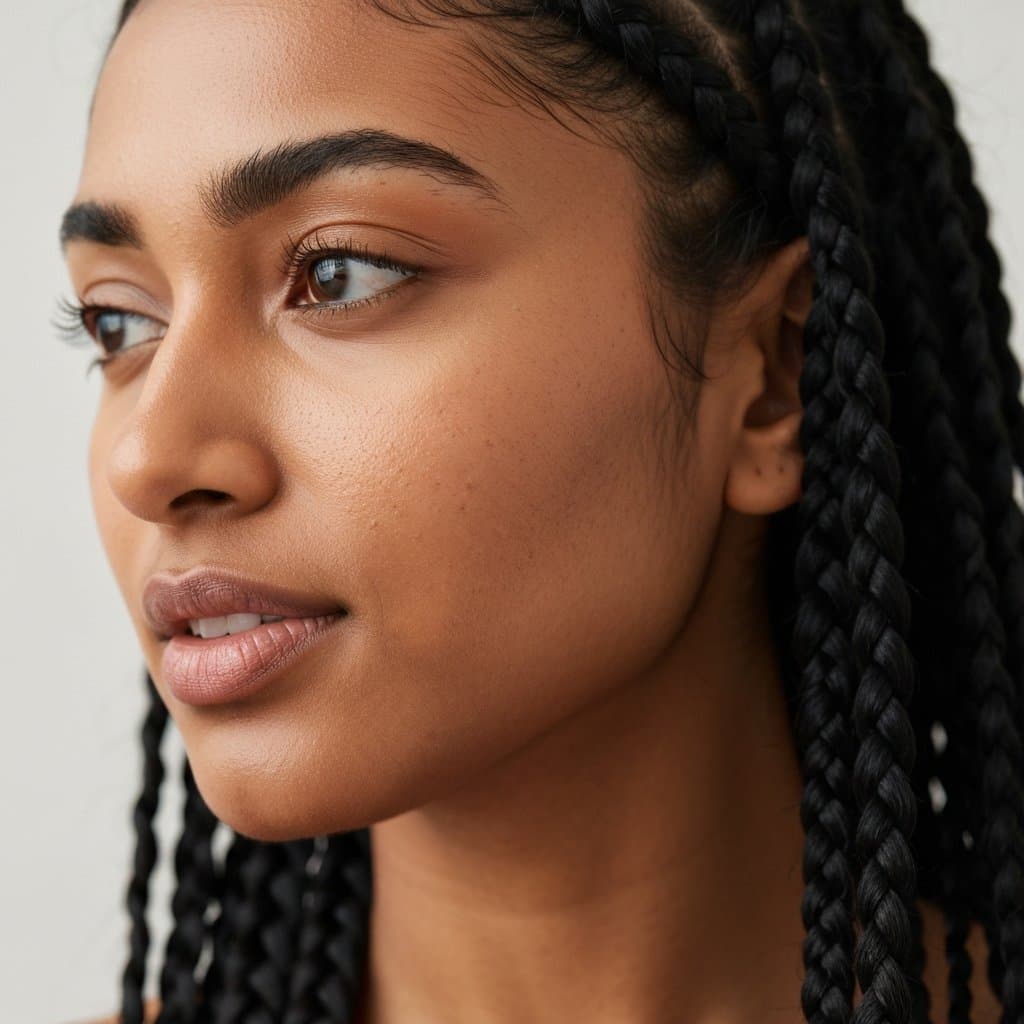Hairstyles for Thick Hair vs. Thin Hair | The Ultimate Guide to Your Texture
Embracing Your Natural Texture: The Foundation of a Great Hairstyle
Your hair's texture is its unique signature—the very essence of its personality. Yet, so many of us spend years fighting against it, wishing for thicker locks or less voluminous tresses. The secret to a truly stunning hairstyle isn't about changing your hair's fundamental nature, but understanding it and choosing a cut that celebrates it. This is the core principle when comparing hairstyles for thick hair vs. thin hair. A style that gives life and body to fine hair can feel bulky and unmanageable on thick hair, while a cut designed to de-bulk dense hair can leave thinner strands looking sparse.

This comprehensive guide will illuminate the path to your perfect haircut. We'll dive deep into the science of hair texture, explore a gallery of flattering styles for both ends of the density spectrum, and reveal the coloring techniques, products, and treatments that can elevate your look from good to glorious. Forget the one-size-fits-all approach. It's time to unlock the potential of your specific hair type, work with a skilled stylist to find your ideal match, and finally fall in love with the hair you were born with. This is your ultimate resource for making the most of your magnificent texture.
Understanding Hair Texture: More Than Just Thick or Thin
Before we can explore the best hairstyles for thick hair vs. thin hair, it's crucial to understand what "texture" truly means. It's a multi-faceted concept that goes beyond a simple binary. Professional stylists consider three key factors when analyzing your hair: density, diameter, and porosity. Understanding these elements is the first step toward a collaborative and successful consultation with your hairdresser, ensuring the final result complements your hair's natural tendencies.

The Three Pillars of Hair Texture
- Density: This refers to the number of individual hair strands on your scalp per square inch. When people say they have "thick hair," they are often referring to high density—a lot of hair strands packed closely together. Conversely, "thin hair" usually means low density, or fewer strands overall. You can have fine strands but high density, resulting in hair that feels thick and full.
- Diameter: This is the thickness of each individual hair strand. It's categorized as fine, medium, or coarse. Fine hair has a small diameter, making it feel silky but sometimes prone to falling flat. Coarse hair has a large diameter, which gives it great body but can also lead to dryness and frizz. It's entirely possible to have low-density (thin) hair that is coarse, or high-density (thick) hair that is fine.
- Porosity: This measures your hair's ability to absorb and retain moisture. Low porosity hair has a tightly bound cuticle layer, making it resistant to moisture but also shiny and healthy-looking once hydrated. High porosity hair has gaps in the cuticle, so it absorbs moisture quickly but loses it just as fast, often leading to frizz and damage. This factor heavily influences which styling products will work best for you.
The Best Hairstyles for Thick, Dense Hair
Thick, high-density hair is the envy of many, but it comes with its own set of challenges. The primary goal for thick hair is to manage its weight and volume, creating shape and movement without letting it become overwhelming. The right haircut can transform a heavy, shapeless mass into a beautifully sculpted, dynamic style. It’s all about strategic removal of weight and clever shaping to enhance flow and reduce bulk.

Long, Strategic Layers
For those who love their length, long layers are a non-negotiable. Unlike short, choppy layers that can create a "puffy" or triangular shape, long, seamless layers (sometimes called "ghost layers") work to remove internal weight without sacrificing length. This technique allows the hair to move freely, creating a softer, more fluid silhouette. It prevents the ends from becoming too bulky and helps the hair fall gracefully, making it easier to style and manage on a daily basis.The Textured Lob (Long Bob)
A long bob, or "lob," is a universally flattering cut, but it’s especially effective for thick hair when texture is incorporated. A blunt, one-length lob can look too heavy and boxy on dense hair. By asking a stylist for textured ends and subtle internal layering, you can maintain the chic, strong perimeter of the bob while creating airiness and movement within the style. This prevents the dreaded "helmet" look and gives the hair a lighter, more modern feel.The Bold Pixie with an Undercut
If you're ready for a dramatic change, a pixie cut can be incredibly liberating for thick hair. To keep it from looking round and puffy, consider a version with longer pieces on top and a tapered or undercut section at the back and sides. The undercut removes a significant amount of bulk, allowing the longer top section to lay beautifully and be styled with ease for volume or sleekness. It's a powerful, chic statement that is surprisingly low-maintenance.The Best Hairstyles for Fine or Thin Hair
For those with fine or low-density hair, the objective is the complete opposite: creating the illusion of volume, fullness, and body. The right haircut can make the hair appear significantly thicker and more robust than it is. The key is to build strong lines, use clever layering, and employ styling tricks that add lift and dimension, turning limp locks into a lively, voluminous style.

The Blunt Bob or Lob
One of the most effective ways to make thin hair look thicker is with a strong, blunt perimeter. A sharp, one-length bob or lob creates a solid, weighted line at the bottom, which tricks the eye into seeing more density. Over-layering fine hair can make the ends look sparse and wispy, so a blunt cut is the perfect antidote. It's a classic, sophisticated style that provides an excellent foundation for building volume through styling.The Voluminous Pixie Cut
Short haircuts are a fantastic option for thin hair. By removing the length that can weigh hair down, a pixie cut allows the strands to stand up from the scalp more easily, creating instant volume. A well-designed pixie for fine hair will have soft, piecey layers on top that can be easily tousled with a bit of texturizing product. This creates movement and the appearance of more hair, proving that you don't need long locks to have a full-looking style.Light, Face-Framing Layers
While heavy layering is a no-go for thin hair, a few carefully placed, light layers can work wonders. Concentrating soft, subtle layers around the face can add shape and movement without thinning out the overall density. This technique, often called "face-framing," draws attention to your features and adds a touch of dimension, preventing the hair from looking flat and lifeless while preserving that all-important fullness at the ends.Color Techniques to Enhance Your Texture
Hair color is a powerful tool that goes far beyond simply changing your shade; it can be used strategically to create optical illusions that enhance your hair's texture. A skilled colorist can use light and shadow to make thin hair appear fuller or to break up the density of thick hair, adding dimension and visual interest. This is where the artistry of hairdressing truly shines.

For Thick Hair: Dimensional Lowlights and Balayage
Solid, single-process color can make thick hair look even heavier and more block-like. To counteract this, introducing dimension is key. Balayage, a freehand painting technique, can add ribbons of lighter color that create movement and break up the visual weight. Integrating subtle lowlights—shades slightly darker than your base—can also add incredible depth and dimension, making the hair appear multi-tonal and dynamic rather than like a solid sheet of color. The interplay of light and dark tones creates an internal texture that is both beautiful and flattering.For Thin Hair: Root Smudging and Strategic Highlights
To make thin hair look fuller, creating depth at the root is essential. A "root smudge" or "root shadow" technique, where a colorist applies a darker shade at the scalp that seamlessly blends into a lighter color, gives the illusion of density and lift. This is often paired with strategically placed highlights. Instead of uniform, all-over highlights that can sometimes make hair look transparent, a skilled colorist will place brighter pieces around the face and on the top layers. This contrast between the darker roots and lighter ends creates a powerful illusion of volume and body.Styling Products: Your Texture's Best Friend
The most perfect haircut can fall flat without the right supporting cast of styling products. The products you use should be tailored specifically to your hair's texture and density, helping you achieve your desired look while addressing common concerns like frizz or lack of volume. Think of them as the essential tools to recreate that fresh-from-the-salon look every day.

Must-Haves for Thick Hair
Managing thick hair is about control, hydration, and smoothness. Start with a hydrating, sulfate-free shampoo and a rich conditioner. An anti-frizz or smoothing serum applied to damp hair is a game-changer; look for ingredients like argan oil or shea butter. For styling, a smoothing cream or leave-in conditioner can help tame flyaways and add shine. When heat styling, a powerful blow dryer is essential to cut down on drying time. A light-hold finishing spray or a dab of pomade can provide definition without making the hair stiff.Essentials for Thin Hair
For thin hair, the focus is on lift and volume without weighing the hair down. Begin with a volumizing shampoo and conditioner, and avoid heavy, oil-based products. A volumizing mousse or root-lifting spray applied to the roots before blow-drying is your most powerful tool for creating lift. When drying, flip your head upside down for maximum volume. A texturizing spray or dry shampoo is perfect for adding grit and body to dry hair, creating that perfectly imperfect, full look. Finish with a lightweight, flexible-hold hairspray to lock in the style without causing it to droop.Professional Salon Treatments for Texture Management
Sometimes, at-home care and styling need a professional boost. Modern hair salons offer a range of advanced treatments designed specifically to manage the challenges and enhance the beauty of different hair textures. These services can provide longer-lasting results, making your daily hair routine significantly easier and more effective.

Taming Thick Hair: Keratin and Smoothing Treatments
For those with thick, coarse, or unruly hair, a professional keratin treatment or a Brazilian blowout can be life-changing. These treatments work by infusing the hair shaft with keratin protein, which smooths the cuticle, eliminates frizz, and adds incredible shine. The result is smoother, more manageable hair that requires significantly less time to blow-dry and style. These are not permanent straightening treatments but rather semi-permanent smoothing systems that can last for several months, gradually washing out over time.Boosting Thin Hair: Volumizing and Scalp Treatments
For fine or thin hair, professional treatments focus on health, strength, and body. In-salon volumizing treatments often use proteins and polymers to temporarily plump up the hair shaft, making each strand feel thicker and fuller. A professional glossing service can also add immense shine and a bit of coating to the hair, which helps it look healthier and more substantial. Furthermore, scalp health is paramount for hair growth. Professional scalp treatments can exfoliate, cleanse, and stimulate the follicles, creating the optimal environment for healthy, strong hair to grow.Frequently Asked Questions About Hair Texture and Styles
Navigating the world of hair texture can bring up a lot of questions. Here are answers to some of the most common queries to help you on your hair journey.

Q1: Can thin hair ever become thick?
While you cannot change the number of hair follicles you have (density) or the natural diameter of your hair strands, you can improve the health and condition of your hair to maximize its potential. A healthy diet, proper scalp care, and avoiding breakage can make your existing hair appear fuller and healthier. Certain treatments and products can also temporarily swell the hair cuticle to give a thicker feel.Q2: What's the difference between fine hair and thin hair?
This is a crucial distinction. "Fine" refers to the diameter of each individual strand—it's very small. "Thin" refers to the density, or the number of strands on your head. You can have fine hair that is very dense (a lot of silky strands), or you can have coarse hair that is thin (fewer, thicker strands). Understanding which you have is key to choosing the right products and cut.Q3: Does layering make thin hair look thinner?
It can, if not done correctly. Heavy, short, or excessive layers can remove too much weight from the ends of thin hair, making it look sparse and wispy. However, very long, soft, strategic layers—especially around the face—can add movement and shape without sacrificing fullness. The key is to consult with a stylist experienced in cutting fine hair.Q4: Are bangs a good idea for thick or thin hair?
Bangs can work for both textures with the right approach. For thick hair, wispy or curtain bangs can beautifully frame the face and remove some weight from the front. Blunt, heavy bangs can also work well. For thin hair, lighter, piecey bangs or side-swept bangs are often more flattering, as a full, blunt fringe can sometimes look sparse or require too much hair from the scalp, reducing overall volume.Q5: How often should I get my hair cut to maintain my style?
This depends on the cut and your hair type. Short styles like pixies require more frequent trims, typically every 4-6 weeks, to maintain their shape. For longer styles, the timeline is more flexible. Thick hair with layers might need reshaping every 8-10 weeks to prevent it from getting too heavy. Thin hair, especially in a blunt cut, benefits from a trim every 6-8 weeks to keep the ends looking thick and healthy and to remove any split ends that could travel up the hair shaft.Conclusion: Your Texture, Your Style
The journey through the world of hairstyles for thick hair vs. thin hair ultimately leads to one simple truth: the best hairstyle is one that honors your natural texture. By understanding the unique properties of your hair—its density, diameter, and needs—you can move from a place of frustration to one of empowerment. Thick hair can be shaped into a masterpiece of movement and flow, while thin hair can be cut and styled to create breathtaking volume and body.
Remember that your hair is a key part of your personal expression. The right cut, color, and care routine can not only enhance your appearance but also boost your confidence. The most important step is to find an experienced, knowledgeable stylist who will listen to your goals and analyze your hair's specific characteristics. Together, you can create a look that is not only beautiful and on-trend but is also perfectly, uniquely you.


